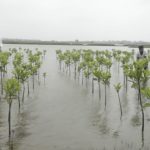Bhubaneswar: The Damage and Loss Needs Assessment (DLNA) report prepared jointly by the World Bank (WB), Asian Development Bank(ADB) and United Nations(UN) has estimated that the damages caused due to the extremely severe cyclonic storm Fani at $3.4 billion (Rs 24,176 crore) and pegged the amount required for reconstruction and recovery at $ 4.1 billion ( Rs 29.315 crore).
According to the report about 42% of this $ 4.1 billion amount would required to spend in infrastructure as the cyclone has weakened the structures. And, 36% of the amount is required for social sector including rebuilding houses.
The cyclone Fani, which hit the Odisha coast near Puri city on May 3, caused widespread damages to human lives and properties in 14 coastal districts of the State. About 1.65 crore people were affected due to the cyclone.
The Odisha chief minister, Naveen Patnaik, released the DLNA report in the presence of United Nation’s India chief coordinator Reneta Lok-Dessallien, and senior officials of World Bank and Asian Development Bank and UNDP, here on Tuesday.
He said, ” Odisha has set global benchmarks in handling disaster by leveraging by technology, strengthening institutional capacities and building resilient measures that helped it face this calamity of national magnitude.”
“DLNA is one of such initiatives which brought global best practices and knowledge for fostering ‘Build Back Better’ in the recovery efforts post cyclone Fani”. said the chief minister adding, “The DLNA will contribute significantly toward expediting the reconstruction and recovery processes in the State.”
The State government under the guidance of the Central government and the support of the WB, ADB and the UN had undertaken the task of assessment of the relief and restoration works required to be taken up in the cyclone affected district.
The assessment was spanned over a period of 20 days comprising a team of more than a 100 multisectoral experts from WB, ADB and UN along with State government officials and NGOs.
The DLNA report provides an overview of the macroeconomic and human impact of the disaster and its a first step toward laying recovery roadmaps and achievement of a vision for disaster resilient Odisha. It proposes a recovery strategies built around three pillars : Resilient Housing , Resilient Infrastructure and Resilient Livelihoods.
The chief secretary and special relief commissioner were present.






